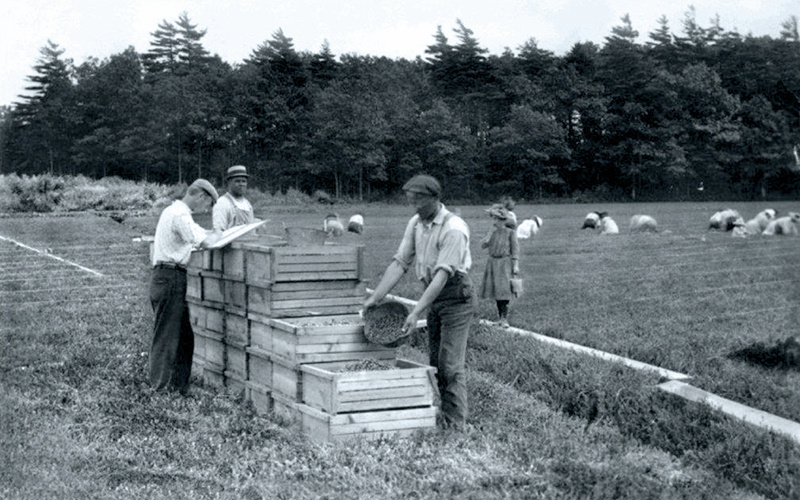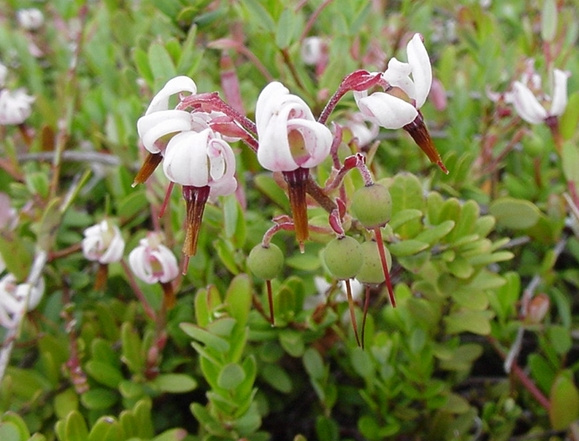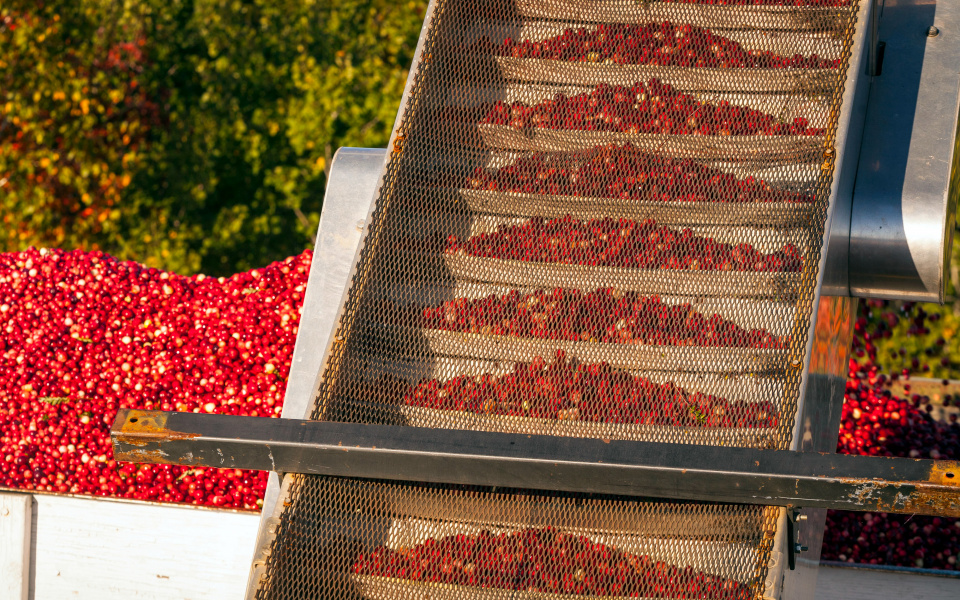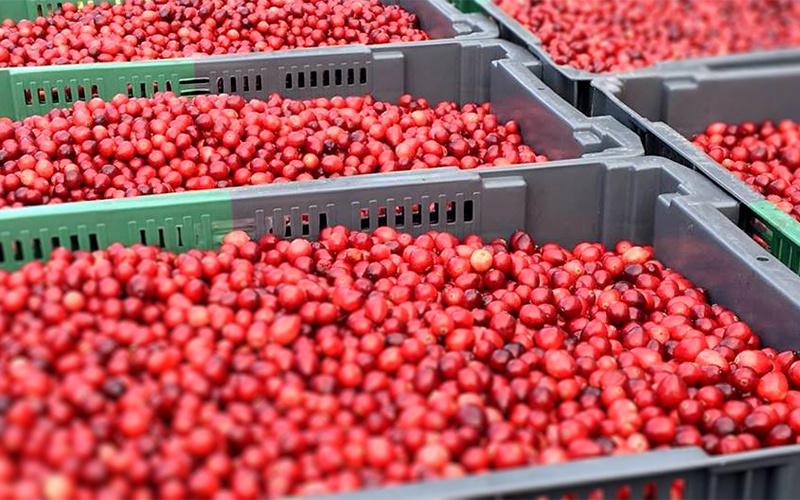
History
The North American cranberry industry has a long and distinguished history. Native peoples used cranberries as food, in ceremonies and medicinally. Revolutionary War veteran Henry Hall planted the first commercial cranberry beds in Dennis Massachusetts in 1816. Today cranberries are farmed on approximately 58,000 acres (23,470 hectares) across the northern United States, Canada and Chile.

Botanical Information
The North American cranberry, Vaccinium macrocarpon, is a member of the family Ericaceae that includes many species including Scotch Heather (Calluna vulgaris), Rhododendrons (Rhododendron spp.) and Blueberries (Vaccinium augustifolium, V. corymbosum). Cranberries are a low-growing, vining, woody perennial plant with small, alternate, ovate leaves. The plant produces stolons (horizontal stems) up to 6 feet (2 m) long. Short vertical branches, or uprights, 2 to 8 inches (5 to 20 cm) in height, grow from buds on the stolons and these can be either vegetative or fruiting. Each fruiting upright may contain as many as seven flowers. Pollination is primarily via domestic honey bees.

Harvest Information
The majority of cranberries are harvested between September and October in the U.S. and Canada, and occurs in one of two ways. By far the most common is wet or water harvest. The beds are flooded and the fruit is "beaten" off the vine using a specialized harvester. The floating fruit is then corralled and loaded onto trucks for delivery to a receiving station. Most wet harvested fruit is used for processed cranberry products like juice and sauce. Dry harvested fruit is "combed" from the vines using a mechanized picking machine. No water is involved during this process. The fruit is loaded into bins and shipped to receiving stations where it is cleaned and packaged as fresh fruit.

Consumer Information
Scientific research is revealing how healthful cranberries can be. Packed with phytonutrients (naturally derived plant compounds), cranberries are a great choice for the health conscious consumer. Cranberries are available in a wide variety of forms including fresh fruit, juice, sauce, and dried. Juices, sauce, and dried cranberries are available year-round at your grocery retailer. Fresh fruit is generally available from September to December. All forms of cranberry products provide similar health benefits and are easy to incorporate into the diet.